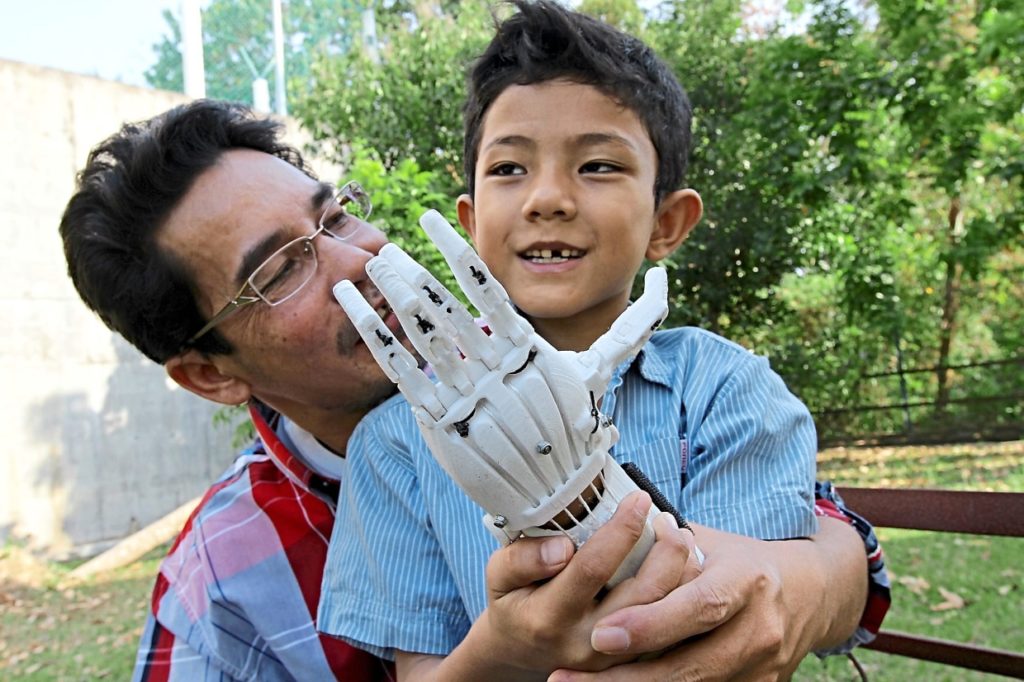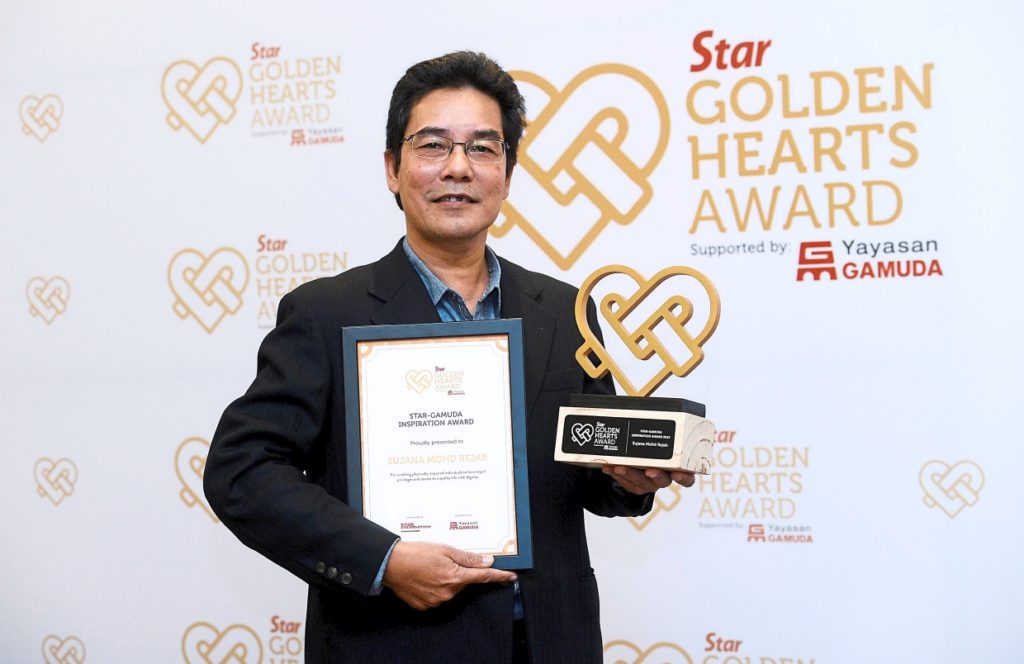Putting a huge smile on the kids faces
PETALING JAYA: A few years ago, a former teacher consulted the “University of Google” and “Professors of YouTube” to learn how to build a 3D printer from scratch.
Eventually in 2015, Sujana Mohd Rejab, or better known as Pak Su, created his very first 3D printed arm for a disabled child.
He has not looked back since. He has now created 3D printed arms for more than 50 children with disabilities from all over the world.“My objective is to put a smile on their face. This happiness cannot be bought. Just like how a clown’s job is to make children happy at parties, that is my objective.
“If I can make them happy, then I consider that a success. I’ve always loved children. I have a soft spot for children with learning and physical disabilities.
“When I was a teacher, I created a set of books to help children learn to read faster and took extra measures to assist weaker students as I didn’t want them to feel left out. I think it started from there, ” said Pak Su, who quit as a teacher in 1997.
The father of six then took a computer programming course and worked at a computing company for a few years before starting his own computer business in Putrajaya for eight years from 2004.
He later returned to his hometown of Taiping, Perak. And his curiosity about 3D printing led him to teach himself the programming behind a 3D printer and build one from scratch with help from the Internet.
“The word ‘difficult’ is subjective. It’s only difficult if we are too lazy to learn how to do it, ” said Pak Su, who is still based in Taiping.
Pak Su then set up MyVista, a company specialising in 3D printers. On the side, he created 3D printed arms for those in need, mostly children, ” he said.
“The children are so happy when they receive the 3D printed arms. They would jump for joy. Sometimes I create these arms to have designs of superheroes like Iron Man so that kids would feel cool wearing it.
“Wearing the superhero 3D printed arms, the kids also look so awesome.”
Pak Su, 51, would rely on his own budget and public donations: “Some donate money and some donate core materials needed for 3D printing.”
 Sujana helping a child wear a mechanical limb using his 3D printer.
Sujana helping a child wear a mechanical limb using his 3D printer.
He said that the 3D printed arms produced in Malaysia are of the same world-class quality found in countries like the United Kingdom, but at a much lower cost.
Pak Su produces two types of 3D printed arms, mechanical and electronic, with the latter being more advanced and expensive to create.“It costs thousands of ringgit to create 3D electronic arms so I have to look for sponsors in order to make them. For mechanical arms, they can start from as low as RM100, ” he said.
His vision is to encourage the use of more 3D electronic arms and for Malaysia to be the cheapest producer of low cost, high-quality 3D printed arms.
He also aims to shorten the procedures to procure a 3D printed arm by eliminating steps such as recipients having to travel to see him to have their measurements taken.
“There are so many procedures. But my vision for 3D printed arms is to be able to produce them like free size t-shirts, whereby people can just get them on a shelf and go home.“We have actually tested this on several people and the system is done, so this is something we’re looking forward to in 2020. I firmly believe that whether we have an ability or disability, we are in need of each other, ” he said.Pak Su is one of the 10 winners of Star Golden Hearts Award 2019, an annual award by The Star and Yayasan Gamuda that celebrates everyday Malaysian unsung heroes.
He also won the Star-Gamuda Inspiration Award, which came with an extra RM50,000.
 A job well done: Sujana with the Star-Gamuda Inspiration Award winning RM50,000 for his cause.
A job well done: Sujana with the Star-Gamuda Inspiration Award winning RM50,000 for his cause.
The win was a surprise to him as he was not even aware that a RM50,000 award would be given out.
“I asked the person beside me, ‘is this real?’, ” he said after his name was announced on stage. “I feel the other nine winners have also done amazing work.”
He said that he would be giving away part of his winnings to children with disabilities, while the rest would be used for research and development of his 2020 project.

